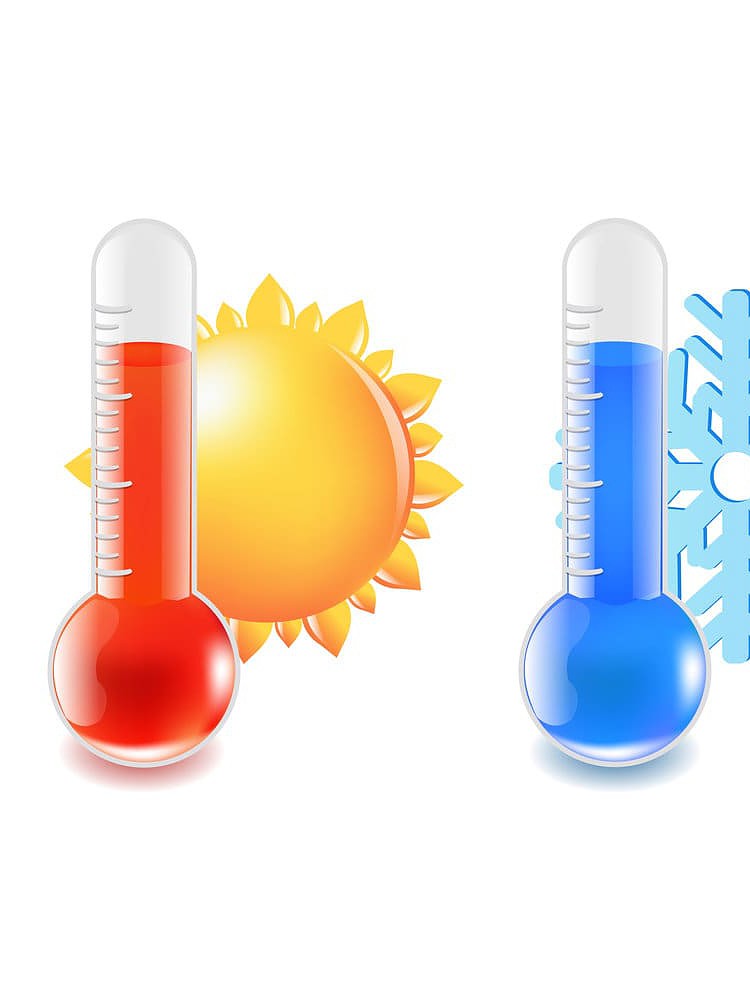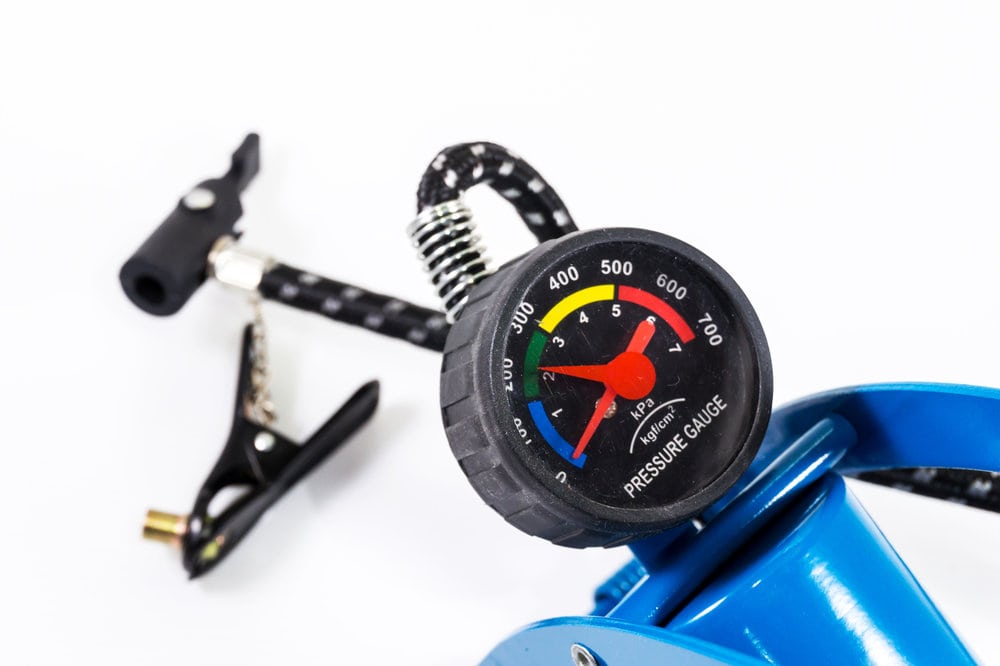“Inflate your boat until it feels right.”
We’ve all heard that before.
After all, it’s the 100% fool-proof method for the perfect air pressure… right?
Wrong.
Most people don’t know what “feels right” feels like.
I’ve seen too many newbies underinflate (wasting energy) or overinflate (destroying their boat) – all because they thought it felt right.
Sound like you?
You’ve come to the right place.
Today I’m going to tell you exactly how much pressure your inflatable boat needs.
We’ll look at:
- The right PSI for every part of your boat
- The dangers of overinflation and underinflation
- How temperature affects air pressure (and how to properly adjust to it)
- Tricks to test air pressure without a gauge
- FAQs (Questions I get about PSI all the time)
Plus, I’ll also throw in a list of the best pressure gauges available online.
Let’s dive in!
Table of Contents
The Right PSI For Inflatable Boats
Don’t want to guess the right pressure? Get a gauge. These show you exactly how much PSI (pound-force per square inch) is in your inflatable boat.
Then, follow this chart:
| Part | Recommended Pressure | Max Pressure |
| Main tubes | 3 PSI | 3.5 PSI |
| Keel | 4 PSI | 5 PSI |
| High-pressure air floor | 9 PSI | 11 PSI |
Keep in mind that these are averages. Check your owner’s manual (if you have one) for the exact PSI measurements.
Important! Keels and high-pressure air floors are NOT ordinary floorings.
Keels are straight tubes placed under solid floors to give the boat a V-shaped hull. High-pressure air floors are a special type of flooring. Standing on these feels like you’re standing on solid ground.
Ordinary inflatable boats DO NOT have these.
It will be disastrous if you force 9 PSI into ordinary floor tubes.
If you don’t have these special parts, inflate everything to around 3 PSI. With that, you’ll have a nice and solid boat.
The Dangers of Overinflation & Underinflation
You don’t need expert precision to inflate a boat – going slightly over or under the recommended PSI isn’t life or death.
That said, you do want to stay as close to perfect as possible.
If you don’t, there will be consequences.
Overinflation is one of the biggest inflatable boat killers.
I’ve seen too many seams cracking under the pressure due to this.
When your boat is overinflated, the smallest bump can explode it. The seams might not give while you’re pumping… but wait til’ you hit a rock in the water.
Strong materials (such as Hypalon) can withstand immediate overpressure. But in the long run, their lifespan will be much shorter.
Underinflation isn’t great either.
Underinflated boats are 2x harder to row, propel, and navigate.
Without solid tubes, your boat will have so much drag. Your motor will push you way slower than usual, and steering your boat will be a headache.
They’re also less buoyant, making you more susceptible to sinking.
How Temperature Affects Air Pressure

Here’s some shocking news:
Overinflation and underinflation are rarely caused by putting too much or too little air.
Most of the time, these problems are caused by temperature change.
Bet you didn’t see that coming.
Just because you pump in the perfect PSI doesn’t mean there’s nothing to worry about anymore.
A little science lesson for you: Air expands when it’s hot, and contracts when it’s cold.
If you pump your boat to maximum pressure and leave it out in the sun, it WILL explode. Heat expands the air in the tubes, building it up to critical levels.
Likewise, inflatable boats “shrink” when they hit the water. Cold water causes the air inside the tubes to contract and lose pressure.
So how do you deal with these problems?
It’s simple…
Check your boat’s PSI every once in a while. Then top-off or deflate it accordingly.
If your pressure gets too high, let some air out.
Too low? Pump some in.
To do this, you’ll need a good gauge.
Calculating PSI gain or loss based on the sun’s heat and water’s temperature is almost impossible (unless you’re a mad scientist). With a good, portable gauge, you can check your exact PSI on the fly.
Which brings us to…
The Best Portable Pressure Gauges
Not all air pumps come with a built-in pressure gauge.
Even if they do, it can be a real hassle to bring them along (especially electric pumps).
For checking your PSI on the go, nothing works better than a portable pressure gauge.
AirHead Pressure Gauge
If you want a precise PSI measurement, go for AirHead’s pressure gauge.
It only runs from 0-5 PSI, but you won’t find anything as accurate as this.
Besides, unless you have a keel or high-pressure floor, 3 – 3.5 PSI is all you need.
It also comes with a handful of adapters for different valves – no worries of not fitting here.
Wakooda Inflation Valve with Gauge
Finding the right inflation adapter can sometimes be tricky. With Wakooda’s inflation valve, you get a Halkey Roberts adapter AND a gauge. Talk about convenience!
Its dial runs from 0 all the way up to 30 PSI. With this, you can inflate your keels and high-pressure air floors.
Plus, it’s super portable – it can fit in your pocket!
Sure, it’s a tad bit expensive. But remember, you’re getting a 2-in-1 deal here.
How to Test Pressure Without a Gauge
Let’s say you don’t have a gauge for whatever reason… is it the end of the world?
Heck no!
Here’s where we turn back that good old advice…
“Inflate your boat until it feels right.”
Yup, it’s not completely worthless advice.
Here’s how it’s done:
Press your thumb on your inflated tube. If your boat is properly inflated, it should press down around ½ inch. If it sinks deeper, you need more air – if you can’t press at all, release some air immediately.
That’s what “feels right” feels like.
Of course, it will never be perfect. But with this trick, you won’t stray too far from the correct PSI.
Some boats (such as the Sevylor Fish Hunter 360) have “pressure gauges” printed on their sides. You can use these instead of your thumb if you wish.
Inflatable Boat PSI FAQs
What’s Bar?
Bar is a pressure measurement unit – just like PSI. It’s used mostly in Western Europe. 1 Bar = 14.5 PSI
What’s kPa?
kPa, or kilopascal, is the pressure measurement unit used in Australia. 1 kPa = 0.16 PSI
How do I convert PSI to Bar or kPa?
With a calculator, you can convert one unit to the other. Or, you can refer to this chart:
| PSI | Bar | kPa |
| 1 | 0.07 | 6.89 |
| 2 | 0.14 | 13.79 |
| 3 | 0.21 | 20.68 |
| 4 | 0.28 | 27.58 |
| 5 | 0.34 | 34.47 |
| 6 | 0.41 | 41.37 |
| 7 | 0.48 | 48.26 |
| 8 | 0.55 | 55.16 |
| 9 | 0.62 | 62.05 |
| 10 | 0.69 | 68.95 |
For conversions over 10 PSI, check out Vici Jour’s chart.
Do I need an adapter for my gauge?
Yes. Some gauges come with several adapters. But you may need a separate one for something like a Boston valve.
Can I overinflate my boat with a hand-pump?
Most manual pumps can’t overinflate a boat. Once you reach max pressure, it’s impossible to force more air in. That said, always be careful! Use a gauge or the thumb test to be sure.
Will my inflatable boat explode if I overinflate?
Yes. Don’t believe me? Check out this video:
Why does my PSI keep dropping?
If your PSI is slowly but consistently dropping, you have a leak. Find the leak and patch it up with glue.
Didn’t find what you were looking for? Leave a comment down below!

I created this site to help people – to help you – with your boat problems. Instead of helping one person at a time, I want this website to be the “one-stop-shop” for everyone’s boating concerns. Read more.




Jon
Tuesday 22nd of March 2022
How do you tell how much pressure is in your boat using the printed air pressure guid on the boat itself Cheers
Steve
Wednesday 1st of June 2022
Hi Jon, every boat is different, and not all inflatable boats have this printed guide. Those that do will likely have different designs, so it will vary depending on the type of boat and the manufacturer. Your best bet is to check your owner’s manual.
If you don’t have the owner’s manual for your boat, you should be able to find it online. Look up the boat by its manufacturer and model number, which you should be able to find printed somewhere on the boat itself.
Tim
Thursday 1st of July 2021
Your blog didn’t address boats equipped with pressure relief valves. Recently, as I watched an inflatable service tech explode one chamber in a boat by what looked like over inflation to me, he quipped that the pressure relief valve didn’t do its job. What are your thoughts?
Bernard
Saturday 12th of June 2021
Thank you very much for this information. I received my boat to day and wanted to start using my boat tomorrow. The problem is now solved by reading this information, Bernard